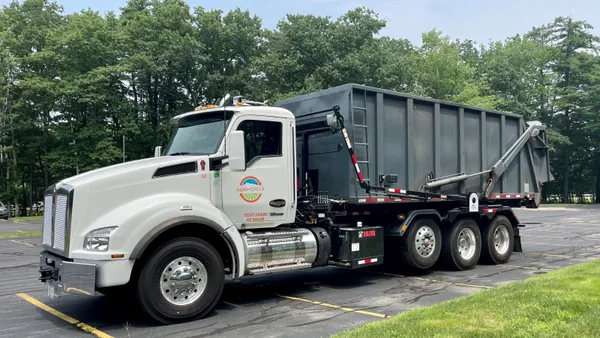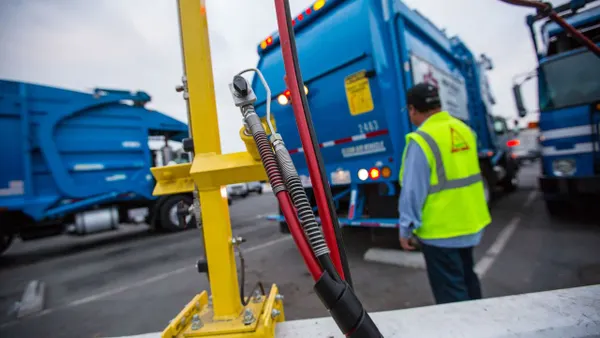Dive Brief:
- In a study published by Bioresource Technology, researchers showed that using a technique called hydrothermal liquefaction (HTL) — a process of subjecting a feedstock to high heat and high pressure — could transform food waste into oil and a carbon-rich aqueous phase. Changing the temperature that the feedstock is exposed to during HTL changes the ratio of how much oil and how much aqueous phase is produced.
- The Cornell University researchers noted that the oil can be refined into biofuel, but the aqueous phase (the non-oil byproduct of the food waste that undergoes HTL) can be used for generating biogas from anaerobic digestion. Roy Posmanik, the lead author of the paper, told Waste Dive in an interview that combining HTL and AD speeds up the overall process. "The HTL takes 20 minutes [to] 60 minutes," he said. "And then you have the aqueous phase, which takes more like three or four days [to digest], rather than three weeks."
- Posmanik added that the HTL-plus-AD process is not limited to just food waste. Other feedstocks, like sludge or wastewater, could undergo HTL and the byproduct could then undergo AD. Posmanik said he and other researchers he works with are working on studying those other feedstocks.
Dive Insight:
As food waste becomes a mounting issue, creative solutions are necessary to divert food scraps from landfills. While some legislative solutions have been offered, the prospect of sweeping federal regulation in the current political climate is more or less unimaginable. Mitigation strategies for food waste may have to come from non-government sources.
According to the American Biogas Council, the U.S. has just over 1,500 anaerobic digesters producing biogas, compared to over 10,000 in Europe. The technology may not have caught on in the U.S., in part, because of how long it takes for food scrap or other feedstocks to digest — 30 or more days, in many cases. The long timeframe for AD to generate renewable energy makes it a less attractive option than some cheaper and faster electricity sources, especially when gas prices are low.
That could change if digesters incorporate HTL into their energy generating process. While HTL requires high heat to operate, that heat can be harnessed and used for other purposes, according to Posmanik. A quicker operating time would greatly improve efficiency, allowing biogas producers to create more energy — and generate higher profits from selling it off.









